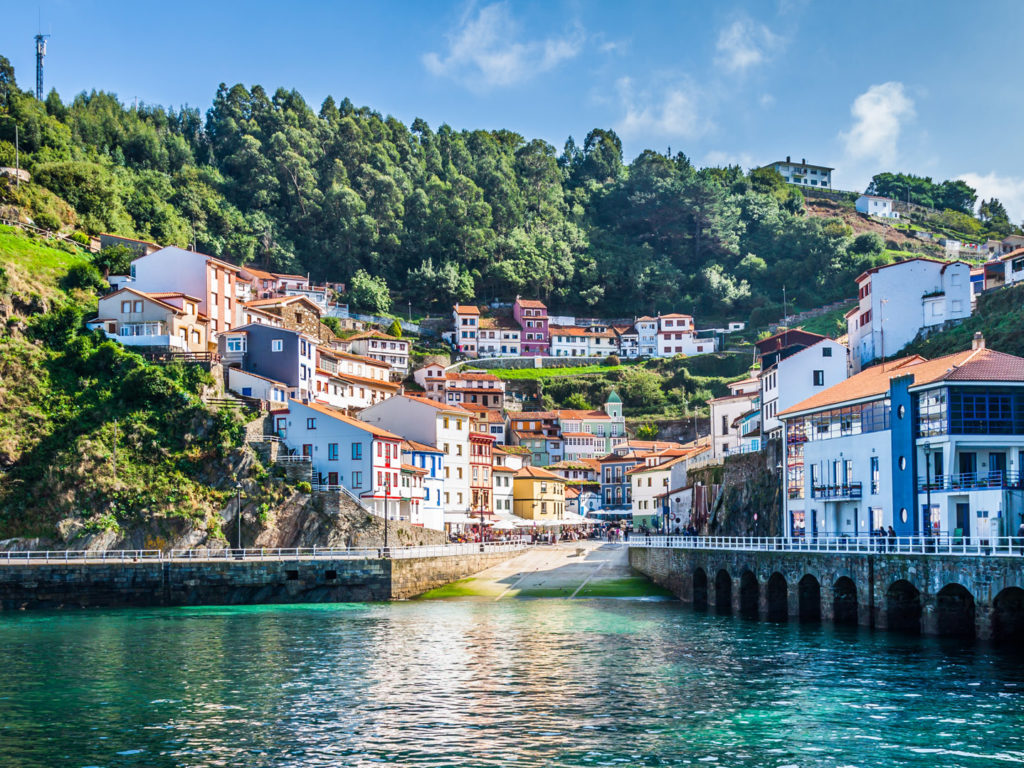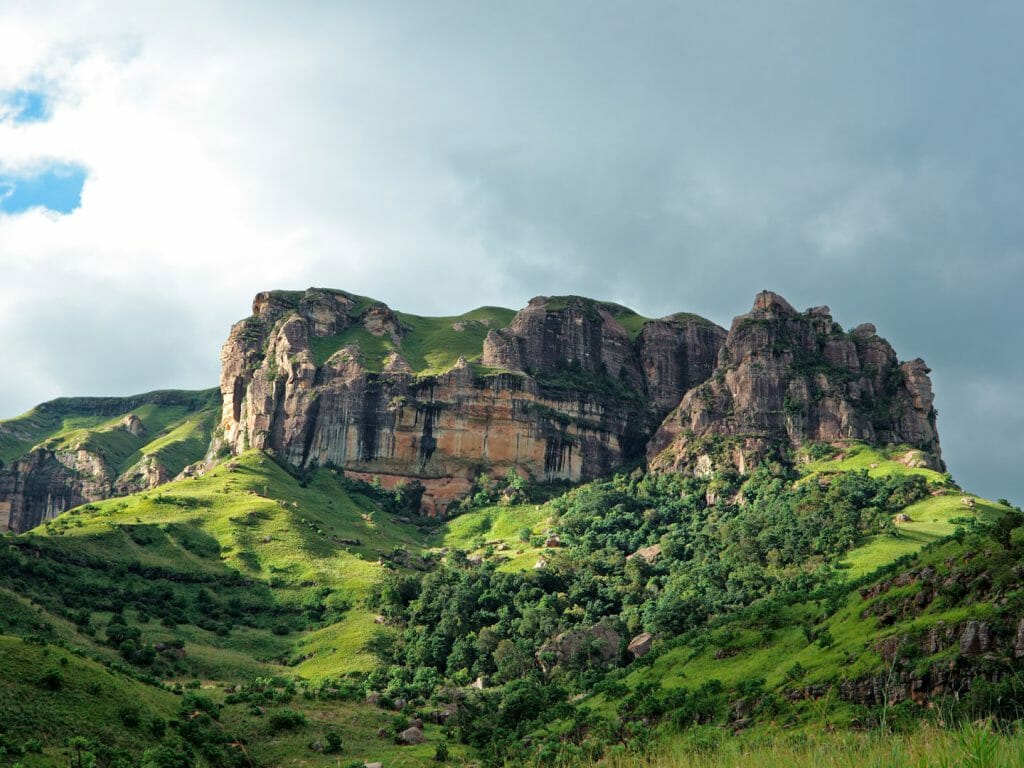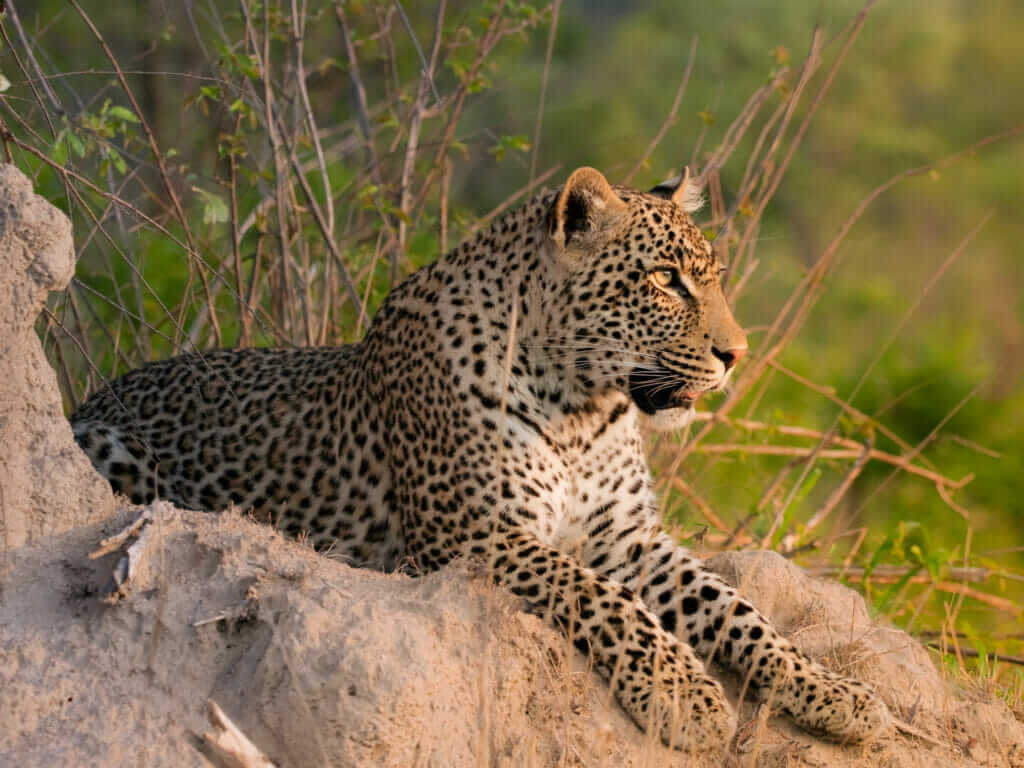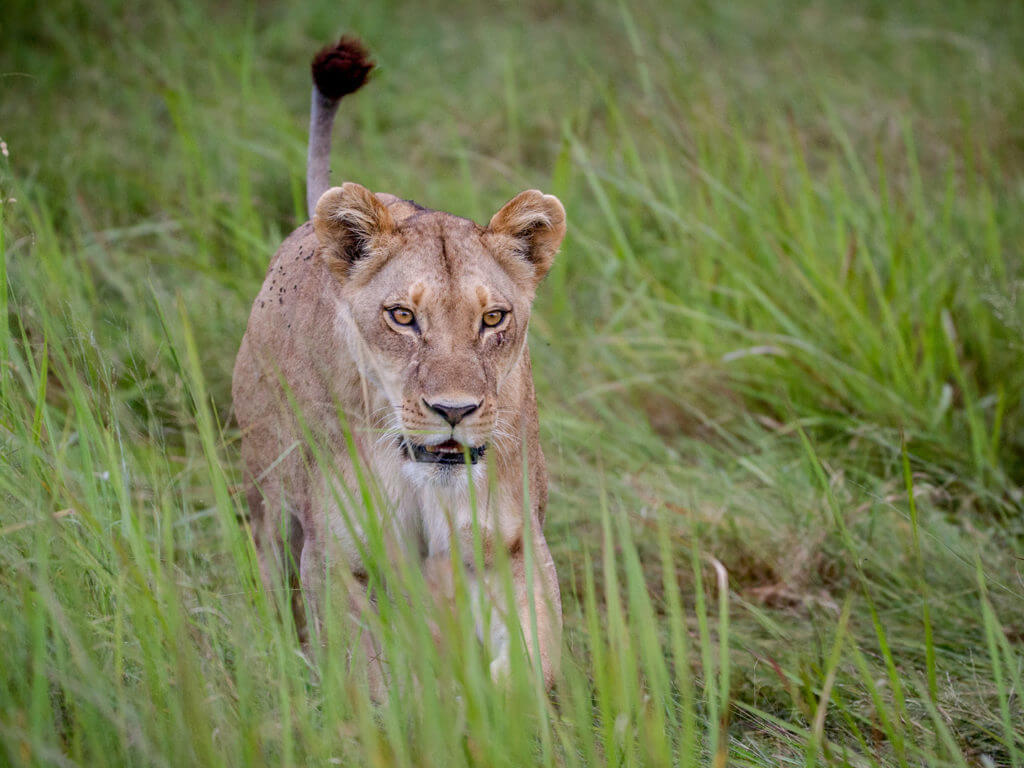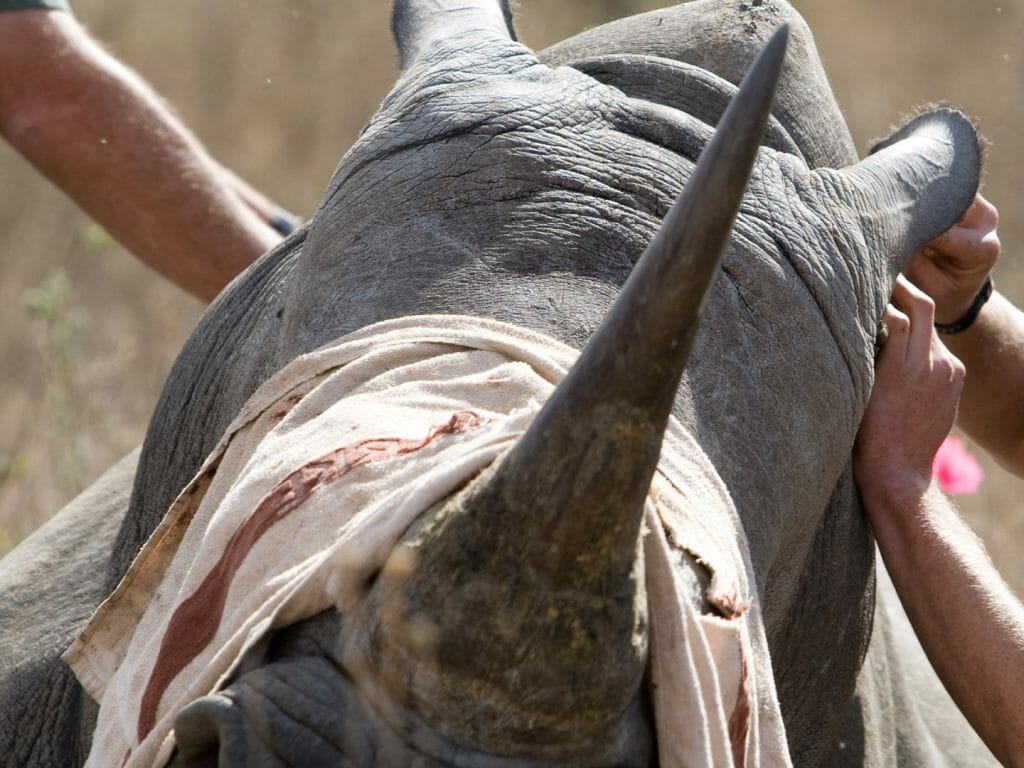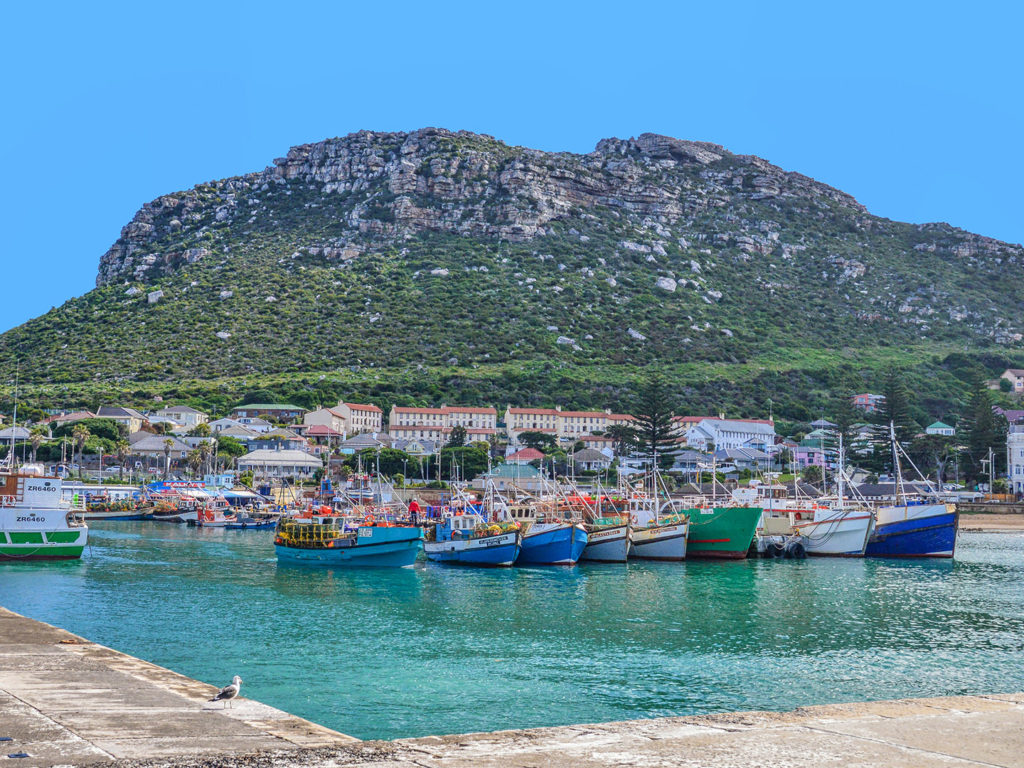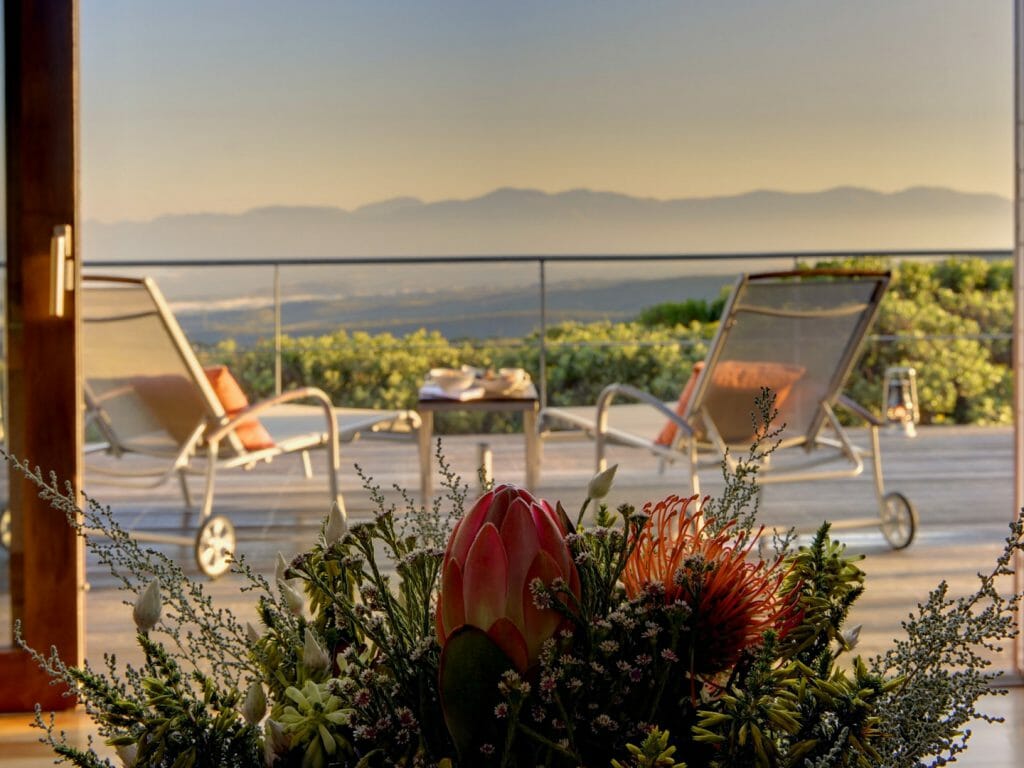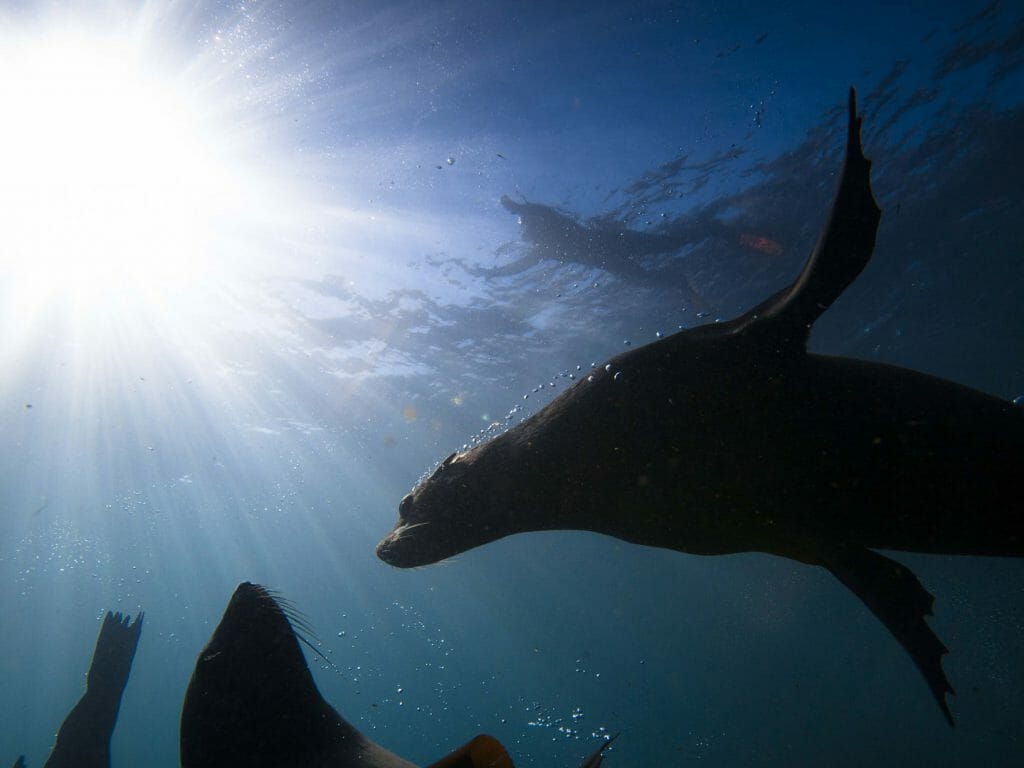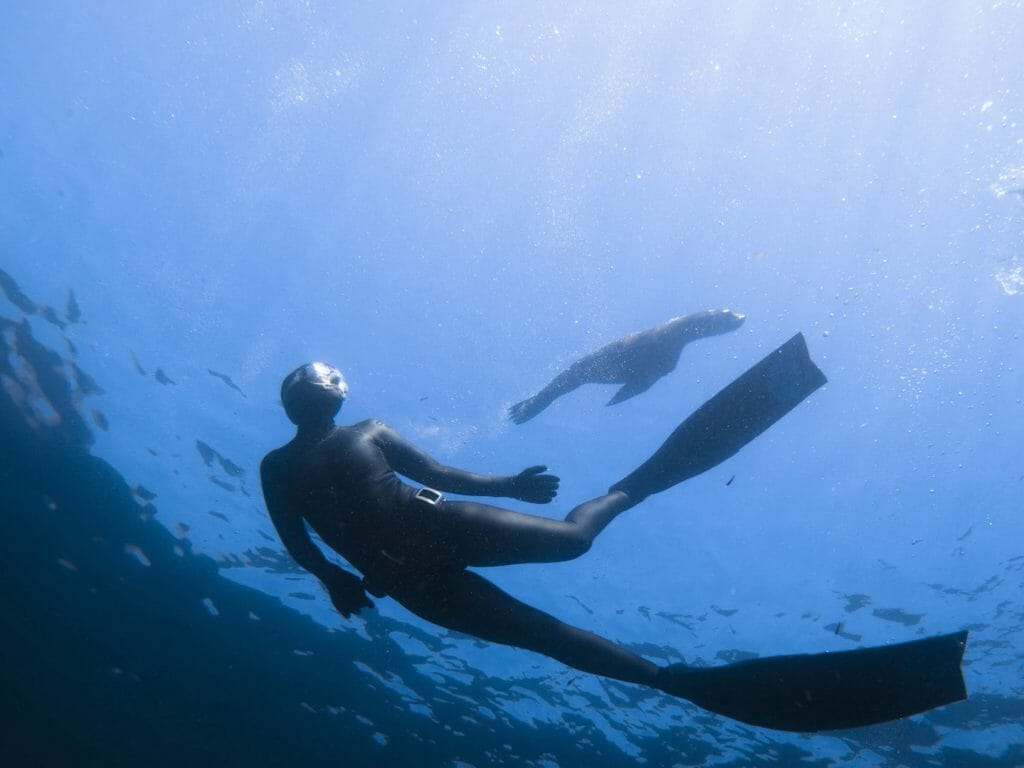“To understand the ecology of a place, you must first understand the rocks”
My guide, Christiaan, stops and gets out of the vehicle. The smell of rooibos leaves, dampened by the recent rain, dances through the air as he strides a few metres to our right.
“Look, here.” He says, pointing to the still damp ground. “Do you see this change in the soil?”
Peering down, I squint at the earth – unusual on a safari. But this is not quite like any other safari. Christiaan is not carrying a gun, and no elephant droppings or lion pawprints mark the ground. I am in the Bushmans Kloof Reserve, in the Cederberg Mountains, just inland from South Africa’s Atlantic Coast. Here, wilderness, rock art and rare endemic species provide the thrills, rather than the big game of elsewhere.
Looking closely, I struggle to see it. But as I allow my eyes to take in the wider area, I notice what Christiaan means. There is a subtle change – the landscape suddenly, but softly shifts from one form to another, darkening slightly. The fynbos vegetation also subtly melts away, to be replaced by something that reminds me more of the Kalahari.
“This is where the sandstone of the Cederberg turns to shale. In essence, here, the Cape Floral Kingdom ends and the Great Karoo begins.” Christiaan tells me, as he sees recognition dawn on my face. “You can see how the colour of the rock changes, but also how this affects the vegetation. Even though the climate of this general area remains the same, the plant species present change due to the geology. This, in turn, determines the animal species that thrive.”
Christiaan grins, looking up. “Basically, rocks dictate everything.”
Indeed, the wildlife here is quite unlike anywhere else. Beyond Christiaan, there is movement in the bush and I see three heads turn in my direction, startled by my presence. Against the bare branches of the low fynbos, the zebras’ camouflage makes perfect sense – they are near invisible in the dusk light. “Cape mountain zebras”, mutters Christiaan. “They are the smallest of all zebra species and only found in this region. They are one of the unusual endemic species that we find in the reserve. I think they are the most attractive of the zebra species, personally.”
Looking pensive, he stares at the immobile zebras. “There used to be far more wildlife here, but humans drove most of it away or to extinction. The Cederberg was once home to three now-extinct species – the black-maned Cape lion, the quagga and the bluebuck.”
The idea of lions roaming this now peaceful wilderness silences me for a minute, as Christiaan strides back to the vehicle. The engine rumbles into life and we head back from the brink, leaving the foreign shale of the Great Karoo for the familiar fynbos-carpeted sandstone.
Ahead of us, a lone eland jogs inelegantly into sight, quickly turning away from the noise of our approach. Then a pair of red hartebeests appear to our right, their coats gleaming in the soft dusk light. This reminds me how much there is to see, lions or no lions. And set against the dramatic rocky landscape of the Cederberg, even a lone eland or oryx looks impressive.
“It is not just the animal species here that are unique.” Says Christiaan, interrupting my thoughts. “This area is part of the Cape Floral Kingdom and, as such, is home to more than 700 plant species. The ground is carpeted with countless different varieties, with each season bringing a fresh cast of regulars. The crazy thing is that some of these plants are only visible for one month of the year. As a guide, it makes our jobs almost impossible.”
I know that Christiaan is an avid birder and can name several hundred bird species endemic to Southern Africa. But apparently learning 700 plant names is a step too far, even for him. For a botanist, however, this place is nirvana.
The following morning, rain has yet again poured down on this arid landscape, announcing the changing of the seasons. But Christiaan’s enthusiasm for this fascinating environment remains undampened. We drive out as dawn breaks, heading for the very fringes of the reserve. We stop for fresh coffee and traditional rusks as the cloud begins to lift from the hilltops. Shuffling to the edge of a deep-sided river canyon, we position ourselves on an overhanging rock, suspended in the air, savouring our bush breakfast.
Looking down at the river below, Christiaan’s keen eyes spot a malachite kingfisher – a flash of colour skimming over the green waters. Immersed in the wilderness around him, he never disengages from it, even as we chat and sip our coffee. Admiring the deep canyon beneath his dangling feet, he says, “These signs of erosion show great forces were once at work here – the hallmarks of an ancient, and very different, climate.”
His gaze shifts up. “The sandstone that forms these mountains is remarkable for two reasons. Firstly, it contains rounded quartz pebbles trapped inside – very unusual. Secondly, it is totally absent of fossils, showing quite how old it is.” Waving an arm nonchalantly at our surroundings, he continues, “Tectonic activity has tossed these ancient stones around, leaving behind a puzzle that we now struggle to piece back together.”
It is not just the rocks that are puzzling. I comment on the lack of cedar trees – surprising given the name of these mountains. Christiaan nods, agreeing with my bemusement. “You’re right. The upper slopes of the Cederberg were once carpeted with cedars. But when colonists arrived, they soon realised that these trees were a wonderful source of straight timber for building. Now, there is hardly a tree left. People have tried to reintroduce them, but despite once flourishing here, they now have just a 25% survival rate when planted.”
We leave this topic behind and with it our dramatic breakfast spot, clambering back towards the vehicle. The sun begins to burn through the lifting clouds, dappling the reddened rocks of the slopes above. I imagine these very slopes were perhaps once home to cedar trees that now find themselves used as lintels, joists or floorboards in some of the quaint colonial buildings that dot the Cape.
Rumbling onwards over the loose rock and gravel of the reserve’s tracks, we continue beside the deep ravine, coming to a stop on an area of bare rock, high above the river below. Christiaan looks at me and says, “The Imax is not suitable for everyone, but you’re pretty fit and you said you’re up for a bit of a scramble.”
We are not, unsurprisingly, about to enter a cinema. Instead it is a rock-art site that has been given this very unscientific nickname. Christiaan has already told me, tactfully, that this adventure is not possible if you are a little rotund, as there are narrow gaps involved. Fortunately, my lanky form is no issue. However, with more than 130 other rock-art sites on the reserve, there are options for all abilities.
Even here, as we walk across the almost purple rock, plants cling to its surface, sprouting from every crack and fissure. We descend slightly, following a gap in the rock – about a metre wide. Grabbing hold of a small tree that emerges from below, Christiaan scrambles down and I follow him. It is only a few metres down, but the atmosphere changes as we leave the direct sunlight behind and scramble down between the cool rock walls.
At the bottom, one side disappears, replaced instead by a narrow cave that runs horizontally along the fissure, falling into the darkness below. The smell of bat droppings wafts upwards from within, the air damp and cold. Our head torches flicker on and the bright white light illuminates bare rock, then sand below. We both flatten ourselves and wriggle down over the rock until we feel our feet touch the floor.
Now, we are surrounded by solid rock, with only our torches for light. Christiaan ushers me forward and we enter a narrow rock passage that takes us away from the light. The smell of still air and bats intensifies, as the two sides begin to close in. This is not for the claustrophobic. Squeezing through a section so narrow that I’m almost touching both sides, I see light filling the passage ahead.
Only a few steps later, fresh, warm air engulfs me and I feel the sunlight on my skin again. I can tell that the river is now closer, ahead of us. The cave’s exit is an unimpressive jumble of rocks, but Christiaan guides me to our right. Rounding a large boulder, we find ourselves beneath a magnificent sandstone overhang, which curves outwards, dwarfing us. “Welcome to the Imax.” Christiaan announces, smiling.
I pause for a minute to take it in. The scale of the place is impressive. The rock above me extends up at least 10 metres, until it curves to a point straight above my head. At my feet are a jumble of loose stones, mixed with a yellow-grey sand. But it is the blotches of colour on the smooth stone in between that catch my eye. Immediately, human figures are discernible, as well as other shapes that are less clear.
We walk closer to one of these clusters of burnt-red smudges and Christiaan points to what are clearly human shapes. They are elongated and barely more than stick figures, but undeniably human. “This is one of two styles of rock art found here.” Says Christiaan, leaning closer. “These kind of paintings depict people and animals engaged in everyday activities. Look closely and you will see that the painter has made a determined effort to be very clear about each person’s gender – this is a key element in the rock art found here.”
I too lean closer and see that some of the figures a have thick smudge of paint extending horizontally forwards from their groin. Others have pronounced semicircles attached to their chests and at the top of their legs, at the rear. The symbolism could not be plainer, even if anatomical accuracy clearly wasn’t a priority.
Christiaan shuffles across and points out a very different painting. This one has no human shapes and the lines are much finer, but there is a symmetry to it that is quite appealing. “This is the second type of rock art found here. It consists of various geometric patterns, similar to this one.
“For many years, we were baffled by the existence of this second type. However, researchers conducting psychoactive drug trials found that their subjects described seeing numerous geometric patterns whilst hallucinating. This suddenly made sense because we know that drug-fuelled trances are practised by the modern inhabitants of this area, so it would hardly be a surprise if their ancestors were doing the same thing.”
I marvel at the idea of these Stone-Age stoners frenziedly daubing these walls with depictions of their hallucinations, only to come back the next day, sober, and return to painting scenes of everyday life. It is an odd image, so I ask Christiaan, “What do we know about these paintings and the people who painted these?”
“We don’t know exactly how old the paintings are, but we believe they were painted by the Bushmen, the original inhabitants of Southern Africa. That means they could date back 10,000 years, but we will never know because there is no organic material for us to carbon date.
“However, we can use other clues. There are a number of rock-art sites where handprint paintings have been placed on top of more complicated work. These are obviously more recent, but their simplistic form suggests an odd regression and loss of skills. The only major event that would explain this would be the arrival of the Khoikhoi people.
“These Bantu people arrived from Central Africa more than 2,000 years ago and intermingled with the Bushmen. It is suggested that skills such as rock painting were perhaps lost then. If this is the case, we know that the paintings here are a minimum of 2,000 years old.”
This complicated history fascinates me and I stare more intently at the paintings that dot the imposing wall of the Imax. It is a mesmerising place. Looking down, I see white, powdery droppings that remind me of hyenas. But Christiaan notices them too and says, “Those are from a cape leopard.” These rare cats are almost impossible to see. Smaller than normal leopards and even more elusive, they are so rare that even signs of them are unusual.
I’m already in awe with this remarkable place, but news of this new resident adds another layer of magic to the already surreal feel. It occurs to me that most of the time, these millennia-old paintings are the domain of this diminutive predator alone. The only disturbance comes in the form of the occasional paunch-free, adventure-seeker that Christiaan honours with a trip to the Imax, for the Cederberg’s greatest show.


